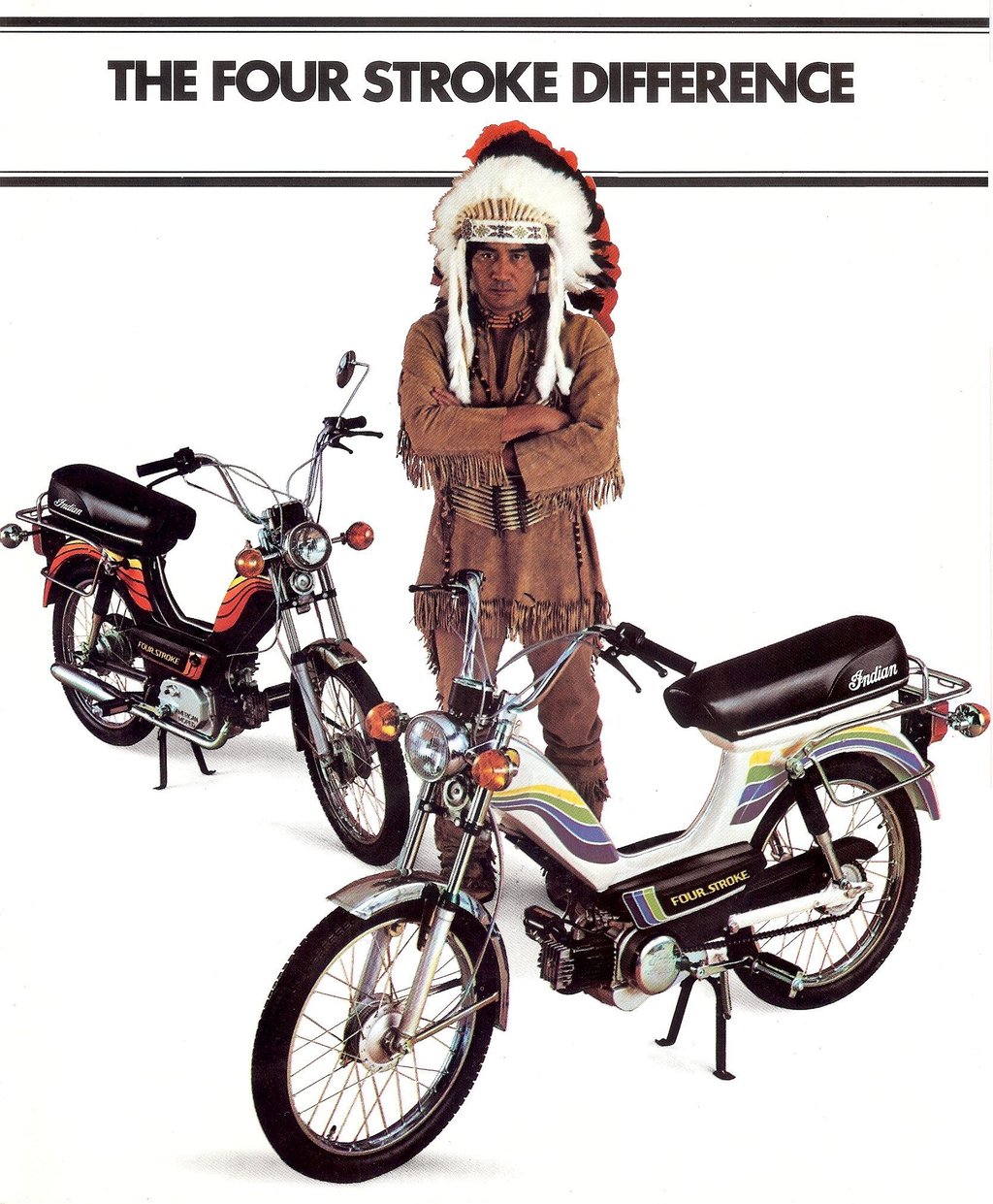Indian Mopeds: The American Four-Stroke Adventure
This article explores the history of Indian mopeds, which were introduced in 1977 after the American Mopeds Associates acquired the Indian name. The decision to use the older Honda 4-stroke moped engine designs was a strategic one, and the design and production of the mopeds were carefully carried out in the United States and Taiwan. Indian mopeds found a place in the market as a functional and economical mode of transportation, but in 1982, the company faced a change in ownership and discontinued moped production. Interestingly, the company later became the distributor for Derbi mopeds. The article concludes by highlighting the enduring legacy of Indian mopeds and their impact on the moped industry.
MOPEDSCLASSIC MOPEDSMOPED CULTURE FOUR STROKE1970'SUNITED STATES INDIAN
11/4/20233 min read


Indian Mopeds: The American Four-Stroke Adventure
Introduction
This comprehensive article traverses the fascinating history of Indian mopeds following their inception in 1977. Born out of a strategic acquisition and marked by resourceful decision-making, these mopeds have carved a distinctive path in the moped industry. Limited in numbers but significant in impact, Indian mopeds provide a unique narrative within the expansive chronicle of two-wheelers.
The Acquisition and the Engine Decision
At the heart of Indian mopeds' inception is the notable acquisition of the Indian name by American Mopeds Associates in 1977. This purchase was significant in that the Indian name held an esteemed place in the global motorcycle sphere. Taking leaps beyond the delimited grounds of acquisition, American Mopeds Associates decided to utilize the blueprint of the dated but proven Honda 4-stroke moped engine designs derived from the PC50. This decision came at a time when Honda was transitioning to all 2-stroke models with releases such as the Hobbits and Expresses. The rationale behind leaning on the older 4-stroke technology invites us to explore the strategic thinking that propelled the advent of Indian mopeds onto the global stage.
Design and Production
The transition from vision to reality for Indian mopeds required meticulous design and strategic partnerships. Under the directive of American Mopeds Associates, the moped's design underwent careful crafting and reviewing in the United States. The blueprint, holding an exquisite blend of traditional and innovative elements, then traveled overseas to the production lines in Taiwan. The Merida bicycle company, renowned for its manufacturing excellence, was chosen as the production partner. The move was a testament to the company's commitment to quality and efficiency. Modifications to the PC50 engine clone were carried out during this stage, including changes to stator and carb configurations to suit the specific needs of the upcoming moped lineup. The synthesis of these efforts culminated in a product instilled with the trusted Indian branding and a promise of reliable performance.
The Market Reception
Upon their release, Indian mopeds found themselves navigating the dynamics of a diverse and competitive market. Their initiation marked the entry of another player in an industry already bustling with seasoned and emerging contenders. The reception Indian mopeds received ranged across the spectrum, with both commendations for their engine reliability and critiques for their disjuncture from the classic Indian motorcycle lineage. Dominantly, they established their niche among those seeking a functional and economical mode of short-distance transportation. Managing to ride through challenges, these mopeds maintained their stead, encapsulating the perseverance inherent in their creation story.
1982 Acquisition and its Aftermath
In 1982, Indian mopeds saw potential threats to their existence when the company faced a change in ownership. The new proprietors decided to retain the Indian name, but discontinue moped production. The focus shifted towards catering to the existing and potential admirers of Indian-branded gear. This decision affected not only the manufacturing constraints but also stirred disruption in customers' anticipations and the market perception, marking the end of an era that Indian mopeds had crafted for themselves. Yet, the history of Indian mopeds didn't halt there, as their narrative only grew more gripping.
The Irony of the Derbi Mopeds Distribution
In a twist of events filled with irony, the company that dropped Indian mopeds from their line-up later found recognition as the distributor for Derbi mopeds throughout the 1980s. This development can be seen as a testament to the company's continuous engagement with the moped industry. On another level, it also introduces a series of 'what if' scenarios about how the Indian moped history might have unfolded had the 1982 acquisition and discontinuation not occurred. In reflecting upon this particular twist, we gain a more profound appreciation of the dynamism within the moped industry and the role Indian mopeds played, albeit brief, in molding it.
Conclusion
Indian mopeds, born out of strategic acquisition and branding, have etched an unforgettable mark in the annals of the moped industry. Their story, filled with trials, triumphs, innovations, and transitions, provides an intriguing study of business strategies and market dynamics. The journey of Indian mopeds serves as a testament to the product's resilience and the brand's enduring appeal. And while the Indian mopeds may no longer be in production, their legacy continues to inspire and intrigue motorcycle enthusiasts and industry analysts alike.
